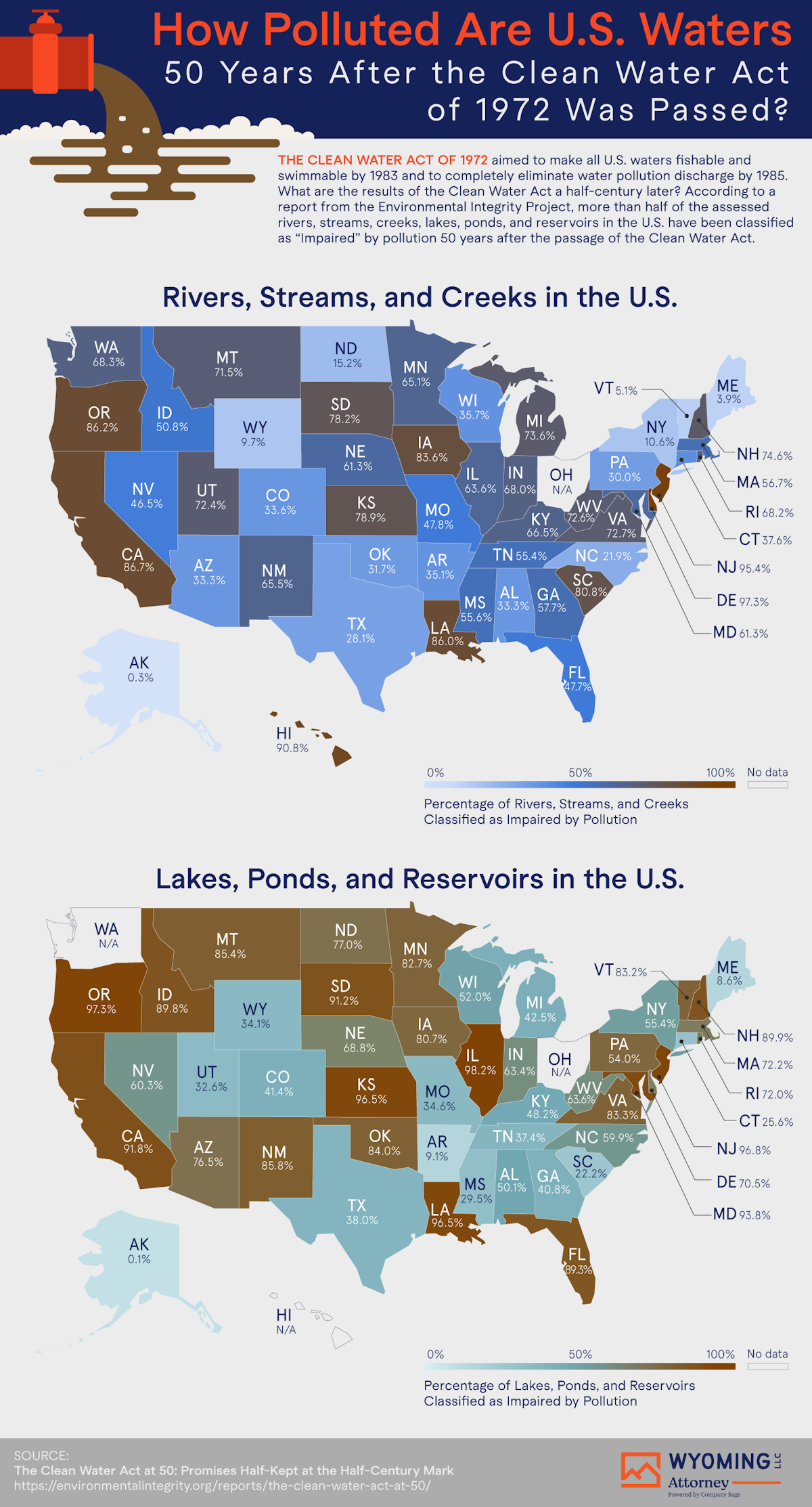- Clean Water Act
Environmental Law: The History of the Clean Water Act
In 1972, the Clean Water Act became a federal law designed to maintain and improve water quality across America. Specifically, its main objective is to ensure that all Americans have access to safe and clean drinking, swimming, and fishing water. The act came about after years of public outrage over the deplorable state of the nation's water bodies. Rivers and lakes had become so polluted with industrial waste and human sewage that many were deemed unsuitable for recreational activities. There were also concerns that significant water pollution would lead to diseases and negatively affect public health. President Richard Nixon signed the Clean Water Act into law in 1972, which provided the Environmental Protection Agency (EPA) with the authority to set water quality standards and restrict the discharging of pollutants into national waters.
Click the image to expand

What Is the Purpose of the Clean Water Act?
The Clean Water Act seeks to restore and preserve the physical, chemical, and biological purity of water bodies like rivers and lakes across the country. To this end, its purpose is to prevent or limit pollution discharges into these bodies of water. In addition to pollution regulation, the Clean Water Act also sets water quality standards to protect the habitats of marine organisms and wildlife. Furthermore, the act seeks to decrease point sources of pollution, such as industrial facilities or wastewater treatment plants, by setting pollution limits that ensure safe recreational use and human consumption while safeguarding marine organisms and their environments.
Enforcement of the Clean Water Act
The Clean Water Act is administered and enforced by federal and state environmental agencies that require any source of pollution to obtain a permit before being authorized to discharge pollutants into navigable waters. These authorizations are called National Pollutant Discharge Elimination System (NPDES) permits. In most instances, state environmental agencies have control of this permit program through the EPA and the standards it has set for water quality. The EPA water quality standards cover metals, nutrients, and pesticides. These regulations aim to protect both human well-being and the environment and use the best available technology for pollution control. The Clean Water Act also covers non-point sources of pollution, such as agricultural runoff and stormwater runoff, which are more difficult to regulate due to being located in multiple places and hard to identify. Best management practices (BMPs) may help to mitigate non-point source pollution.
The Clean Water Act's History of Challenges in Implementation
Even though the Clean Water Act has proven its worth over time, its implementation remains challenging due to a lack of funding for enforcement and compliance efforts. EPA officials have struggled to keep up with a vast backlog of permits that need to be issued and monitored to ensure compliance with the law. The act also faces opposition from certain industries and big businesses that feel that it creates an unfair burden by being too expensive and restrictive to economic growth. On the other hand, supporters of this law point out its effectiveness in cleaning up our nation's waterways and safeguarding public health. Supporters also highlight its creation of jobs within environmental sectors while outweighing compliance costs concerning clean water benefits.
- Changes Needed If Key EPA Program Is to Help Fulfill the Nation's Water Quality Goals
- The Clean Water Act at 50: New Challenges Around the Bend
At its heart, the Clean Water Act is a critical piece of environmental legislation in the U.S., setting clear standards for water quality and regulating pollution releases into American waterways. Although effective at reducing pollution levels, more work is still required to protect and restore national water resources. By learning more about environmental legislation like the Clean Water Act, everyone can contribute to the health and well-being of water sources while helping to preserve ecosystems that rely upon them.